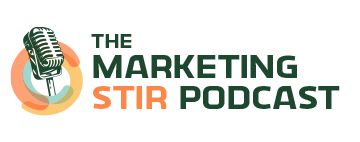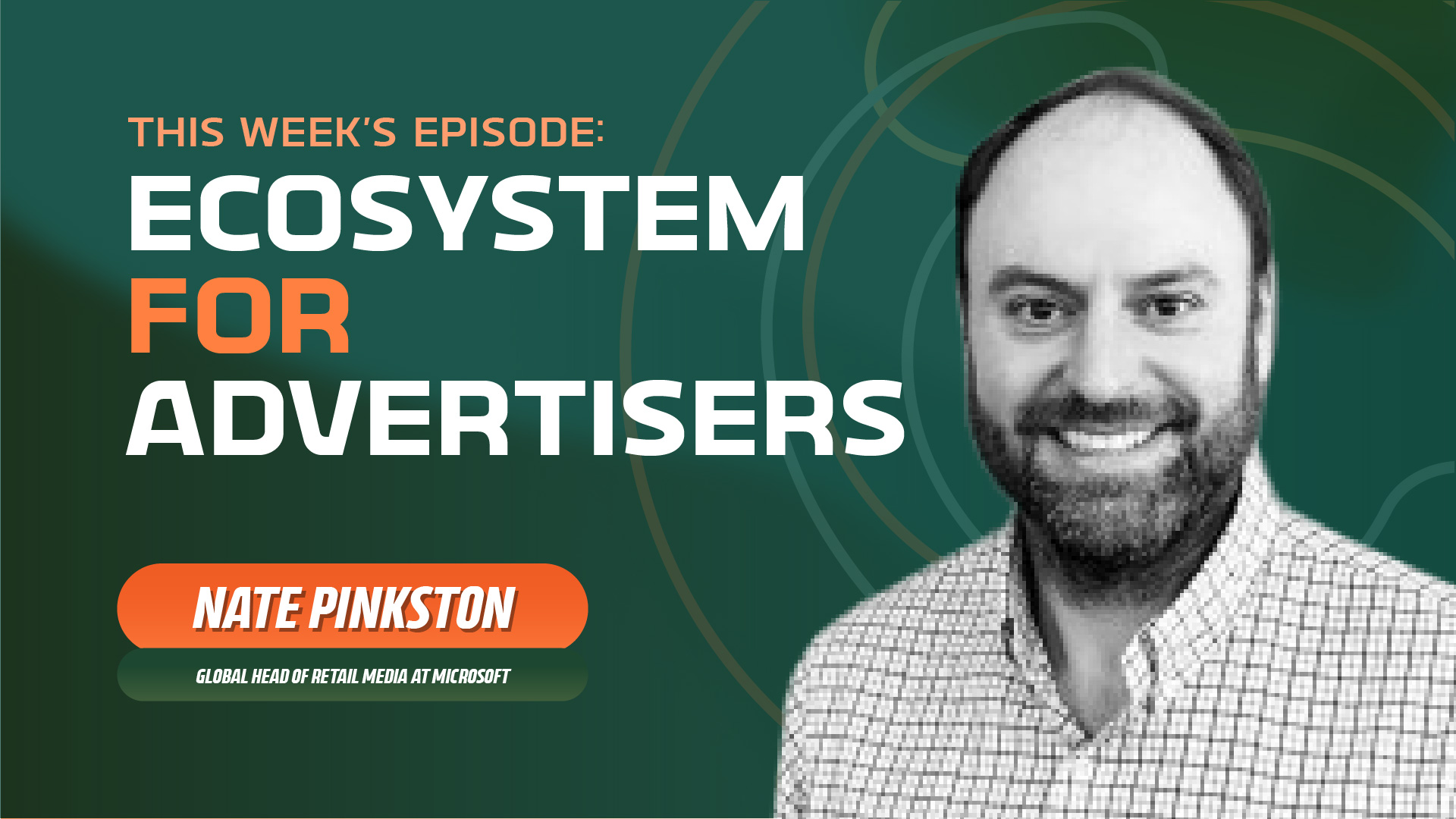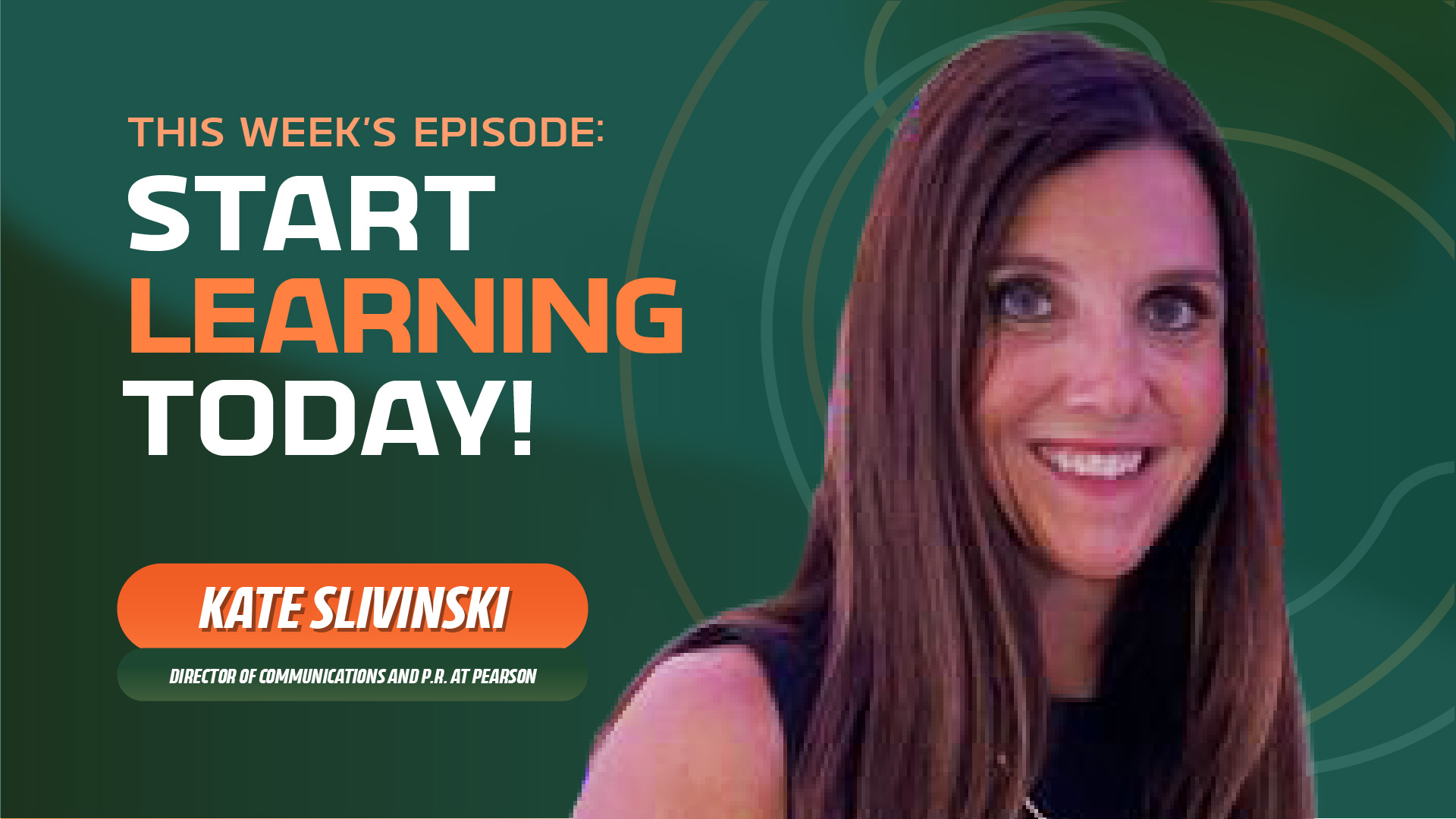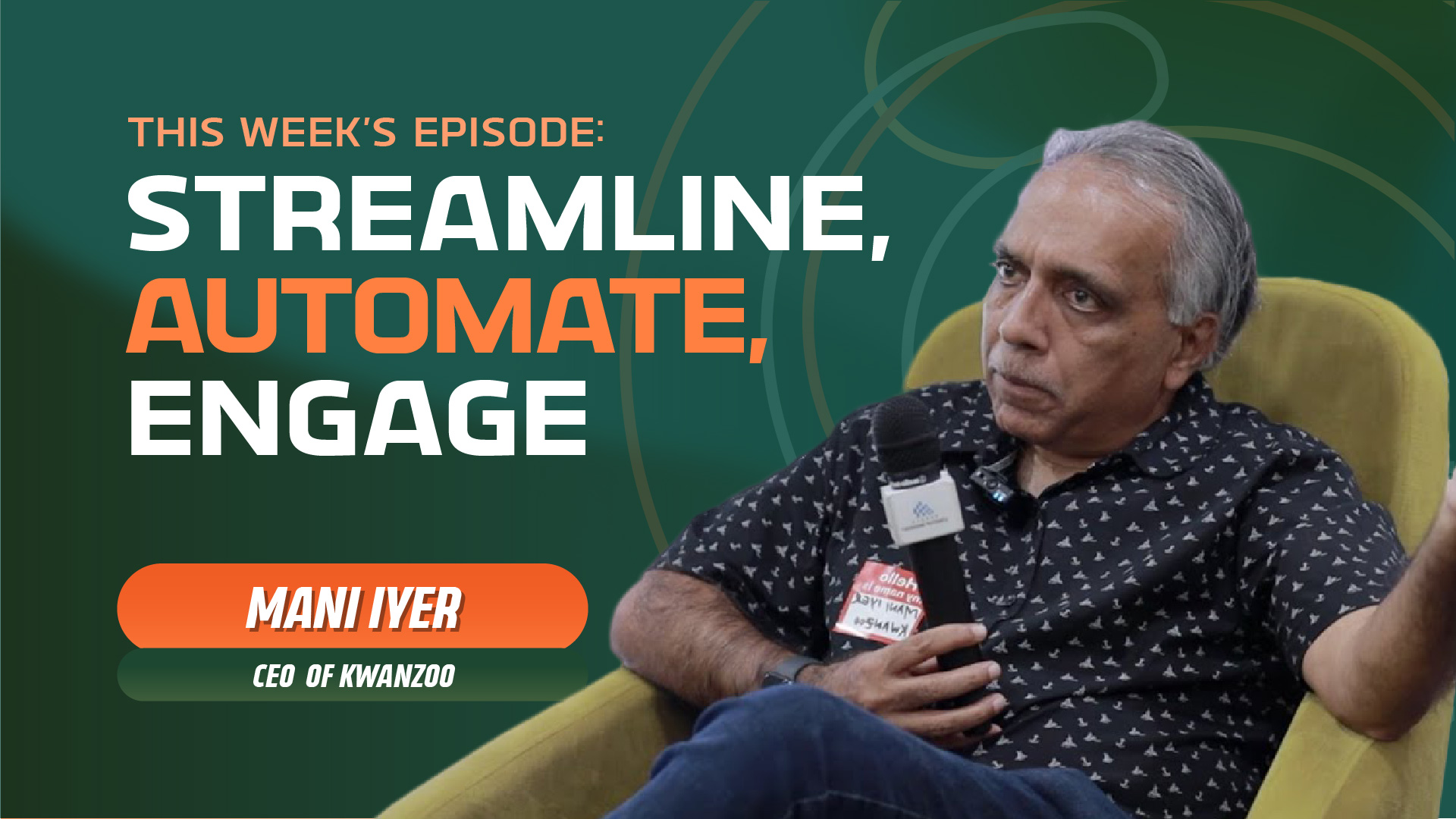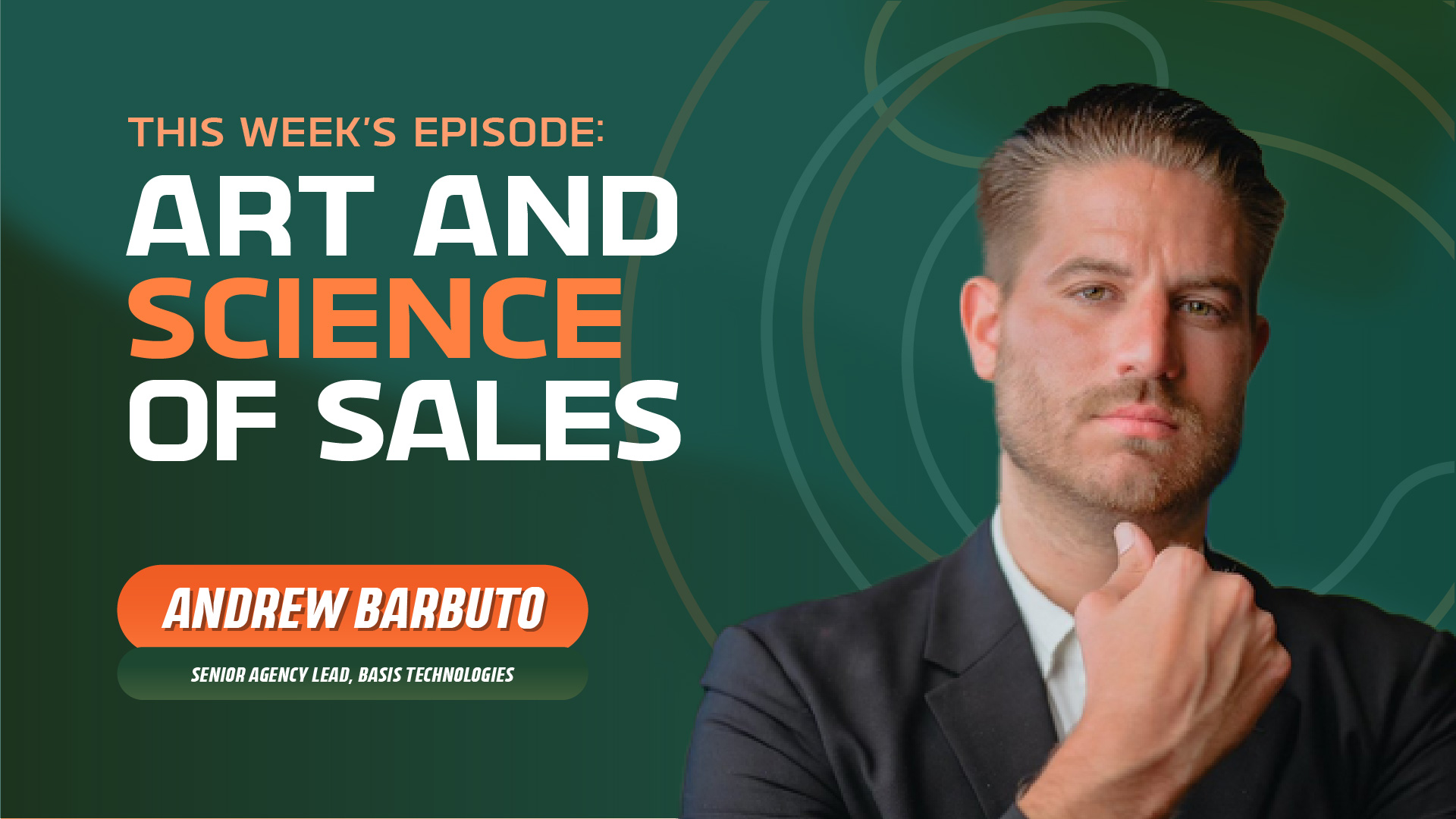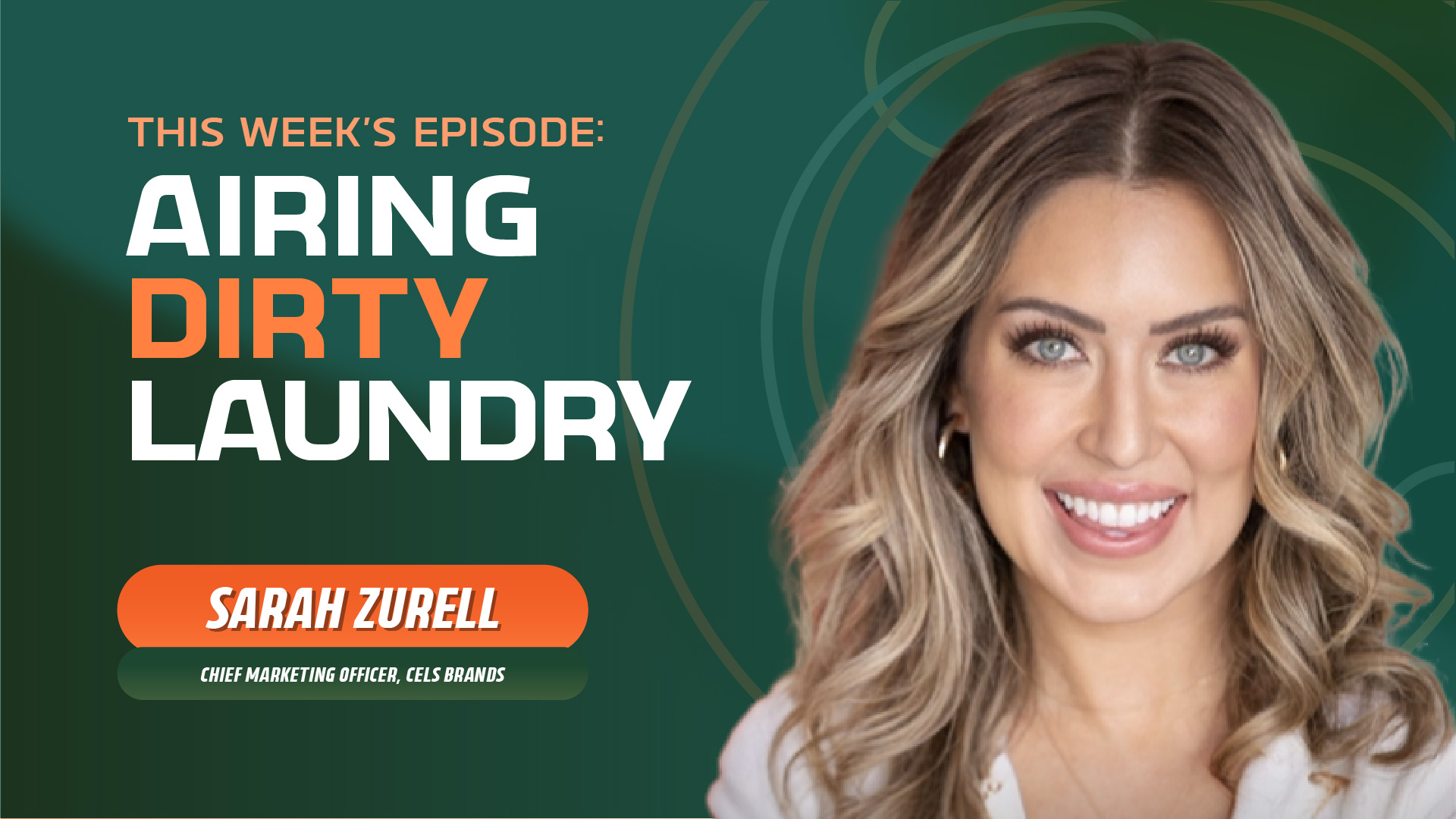Deanna Shimota (GrowthMode Marketing) - Get Really Hyperfocused
- 0.5
- 1
- 1.25
- 1.5
- 1.75
- 2
Speaker 1: Maybe big data has gotten too big. Whether you're a B2B marketer or a consumer brand, your data needs to be viable, relevant, and accessible so that Stirista can help you retain customers, acquire customers, and make it personal.
Vin Lapsley: Welcome to The Marketing Stir Podcast by Stirista, probably the most entertaining marketing podcast you're going to put in your ear. I'm Vin, the producer here at Stirista. The goal of this podcast is to chat with industry leaders and get their take on the current challenges of the market, and we'll have a little fun along the way. In today's episode, Deanna Shimota, the CEO of GrowthMode Marketing, chats with us about how we help clients get hyper- focused on who their audiences and create content that resonates with them as well. Give it a listen.
Vincent Pietrafesa: Ladies and gentlemen, hello and welcome to another episode of Stirista, The Marketing Stir. I, of course, and your host, Vincent Pietrafesa, the Vice President of B2B Products and Partnerships, and still the interim general manager of the B2B Division, they have not taken that title away from me. I still have my vice president title. Who knows when that'll change? Let's see. I don't know. Hopefully people are listening here at Stirista, and they'll be like, " You know what? It's about time," but no, it is not. I'm having fun here. I am celebrating my fourth year at Stirista. I've known Stirista for 13 years, and I've known our CEO and my normal co- host, Mr. Ajay Gupta, for that long. But when we were just kids, we were kids back then, but he could not be on this episode, so I'm flying solo, but that's okay. Because we have an amazing episode for you. I'm happy, as I always am. Ladies and gentlemen, who am I kidding? When I'm sad, it must been something catastrophic. But welcome to another episode of The Marketing Stir. Ladies and gentlemen, who is Stirista? If you're just tuning in, we are a marketing technology company. We own our own business- to- business data, business- to- consumer data. We help companies access that data through our technology, email marketing on the acquisition side, new customers. Isn't that a great thing? People love new customers. Also, we have our own DSP. We do connected TV. Email me vincent @ stirista. com. That is how confident I am. I just gave you my email address. Wow. And boy, are you using it? Not always for the reason that I intend it to be, but hey, you also tell me how much you love the podcast. You also are stopping me now, and Ajay, more me, I think, at least in my head, I think it's more me. At conferences, we just went to a great conference, and people were like, " Hey, you are the host of The Marketing Stir." I said, " Yes, I'm one of them." And so thank you for that. We really do appreciate it. So like I said, ladies and gentlemen, this is going to be a fun episode. I love meeting new people. The most favorite thing about doing this podcast is meeting new people. And this is, she's amazing. Ladies and gentlemen, she's the CEO of GrowthMode Marketing. Ladies and gentlemen, Deanna Shimota. What's going on, Deanna?
Deanna Shimota: Hello. Thanks for having me, Vincent.
Vincent Pietrafesa: It's great to have you, Deanna. I am fresh off of a vacation, so I'm back. I'm happy to be back in the office. A lot of people are like, " Wait, don't you want to stay on vacation?" I'm like, " Well, when you have two children and you travel to Europe, you're happy to be back in the office and you're happy to be doing the podcast," but it is good to be here. My family and I, we were in Copenhagen, Denmark. A lot of people are like, " Why?" We have friends there. And so we went to visit, and also LEGOs were founded there. I don't know if you knew that, Deanna, but LEGOs were founded in Denmark. And so there's this whole big town dedicated to the LEGO for which my six- year- old loved. But I'm happy to be here. I'm happy to be with you. So tell us, how's everything going right now for you? How's your summer thus far?
Deanna Shimota: Yeah, my summer's been good. I haven't been able to go to Copenhagen. That sounds kind of amazing. But we have them all over America and Minnesota, and they have LEGOLAND, so I'm sure it's very comparable.
Vincent Pietrafesa: Very. Yes. And it would've been a much less of a flight. I don't know. How far is it to get to Minnesota from New York? Three hours, four hours?
Deanna Shimota: Yeah, probably a three- hour flight, I would guess.
Vincent Pietrafesa: I'll take it, as opposed to eight hours and then a six- hour time difference. I'm kidding. I loved it there. If my friends are listening, Finn and Gita, they're probably not, who knows? But it was a great time we were there, but yes, it is. But also, you're in Minnesota, so this is the time. This is the time to visit Minnesota. There's just a few lakes out here, just like there's a few thousand. I know.
Deanna Shimota: There's a few there. It's the land of 10, 000 lakes, but actually, I grew up in Wisconsin, and there's more lakes there, so it's kind of funny to say that-
Vincent Pietrafesa: Oh, wow. Yeah.
Deanna Shimota: ... Minnesota's the Land ofLakes, but there are definitely a lot of lakes around here.
Vincent Pietrafesa: Yes, yes. We've had a prior guest on from Minnesota. We have one of my esteemed colleagues is in Minnesota. Shout out to Aaron Groat. He's helped us out tremendously here. But yeah, I know Wisconsin never... you never hear about Wisconsin having lakes. You just hear amazing cheese, the Packers, but no, more lakes in Wisconsin. You've heard it here first The Marketing Stir. Let's get into it, Deanna, because I could go off on a tangent. Because I like talking to you, and I felt like I've known you for a long time, but we haven't met. We're just meeting, we'll change that, maybe in Minnesota or New York, we're going to change it.
Deanna Shimota: Yeah. Let's do it.
Vincent Pietrafesa: But let's get it out there. GrowthMode Marketing. For people who don't know about GrowthMode Marketing, you are the CEO, tell us about your organization. Tell us about your role at the organization.
Deanna Shimota: Yeah, so GrowthMode Marketing is a demand generation agency that helps B2B companies break through the clutter of a crowded market so they can crush their revenue targets. My role there as CEO, I work with a lot of the clients, I like to be really hands- on in helping them build the strategies for their organization and the foundation to help them achieve high growth.
Vincent Pietrafesa: I love it, and I love hearing... as I mentioned that in my title, B2B is my world. It's been my world for the last 10 years plus. So I love hearing that. Love demand generation will dig into that in a little bit, but talk to us how you... one of our stable questions. We have about four or five of those that we get to, and how'd you get started in marketing?
Deanna Shimota: Once upon a time, I actually majored in marketing communications in college, and so I'm one of those people that actually majored in marketing, stayed in marketing. I know so many marketers come from different areas. Once I graduated college, I've worked in marketing roles my entire career. I've worked at both big companies and small companies, and they've all been in B2B, and learning and growing my marketing knowledge along the way. And in my last couple of stops on the corporate side, I came in as the loan marketer, and I built out the marketing department from the ground up, putting in the processes, the technology, and building out the teams to support high revenue growth.
Vincent Pietrafesa: And so, do you like that, Deanna? Do you like building it up from the ground up? Is that kind of what intrigues you to keep doing what you're doing?
Deanna Shimota: Yeah, that's a great question. I do building it from the ground up because I think when you come in with a blank slate, there's so many possibilities. And when you're coming into those big organizations, there's so many marketing people, and you think about it and it's like, " You have a team who does this and a team who does that, and a team who does that." And I have found in smaller organizations, I loved working in them because, from a professional perspective, I was able to get my hands really dirty, meaning I had to go and learn all these different facets of marketing. And I think that really helped me as I grew up in my career and grew to higher levels in my career to have an understanding and to be able to know. For example, how to go into marketing automation and do the things that I had to do. They didn't have marketing automation when I first started my career, but to be able to go and do those things and to really understand what it takes, I think it helps me hire people who have the different skill sets and to know where I have expertise and where I need to pull someone else in as well. You can be a jack of all trades and a master of none if you start to do everything.
Vincent Pietrafesa: Yeah, exactly. And you hear from a lot of people on the podcast there, it's like, " Know what you're good at, but also surround yourself with people who are focused on other things and are good at what they do." And you are right, Deanna, you are in the minority of people who have been on this podcast where studied marketing and I'm in marketing and kind of stayed along that B2B. You get so many people on this podcast like, " I studied religion and now I'm in marketing." I'm like, " Is that even a subject in college?" But apparently it is. But also, you were doing great things on a traditional path of marketing, if you will, but what made you kind of shift and start GrowthMode Marketing?
Deanna Shimota: I didn't set out saying, " Someday I'm going to go start a marketing agency." I was on the career path in the corporate world. I had big plans to be a CMO and then eventually a CEO, and was working towards that. And in my last role as a VP of marketing at a software company that was being pushed to grow rapidly, I was charged with building the marketing infrastructure to accelerate revenue growth. And I didn't have a big team. And I was looking for outsource support specifically because, with a private equity firm behind us, we were looking to grow really rapidly in about five years and didn't want to hire a bunch of employees, quite frankly, because they didn't want the fixed cost for the organization. So they're like, " You can hire a handful of people on marketing. Here's a budget. Go build out the marketing infrastructure." I was struggling to find a B2B agency that understood what we needed. They all wanted to talk about this great brand experience that they were going to create for us. And I had come to them and I said, " Help, we need leads. We need them yesterday," which every B2B marketer knows that struggle, right? When revenue's down, they turn to marketing in a panic, and they're like, " What can you do?" And that's not an easy fix. You can't turn on a program and tomorrow the leads start rolling in. But having these conversations with the agencies, as a marketer, I absolutely understand the role brand has to play in creating demand in the market, but it didn't feel like the agencies understood how to frame that in a way to build high growth. So I was having lunch, fast forward a little bit, with a colleague that I used to work with at a different company, and we were talking about how the teams at agencies I was talking to just didn't have the corporate site experience to know what it was like to have the pressure to deliver, improve the results to the board of directors and the investors. As we were talking, we saw an opportunity to create an agency experience we were seeking. And ultimately, long story short, that's why we decided to start GrowthMode Marketing is for those organizations that are in high growth mode, who need somebody who really understands and has been in their shoes and can say, " Okay, here's how we're going to help you build a foundation to help support that mission for the company."
Vincent Pietrafesa: And I love that story there. And Deanna, are you finding that a lot of the customers that you're working with shared some of those similar frustrations, and that's mainly who you're helping?
Deanna Shimota: Absolutely. We're often working with companies that are private equity- backed. They may have just gotten a cash infusion, and they're now being told they need to grow. They don't necessarily have the internal marketing team fully built out. And so they need to put the foundation in place to support that high- growth mission. And as they navigate their growth journey, they're really in need of a partner who understands the pressures they're under, the challenges of navigating in a very crowded market, and how to build that long- term strategy that produces results. Because I think it's so easy when you get in that situation to do what I would call random acts of marketing, meaning, " Oh, we're going to do this campaign and we're going to test this digital advertising, and we're going to throw a podcast out there," and shooting a lot of bullets before they shoot a cannonball to try to find what works, but spreading so thin that there's no real strategy and long- term intention behind it, and they don't realize it until it's too late.
Vincent Pietrafesa: Yeah. I agree. And I think I like your approach because you're very much focused on, it seems, the revenue results, not just like, " Oh, hey, just go and get me some leads of random people." It's like, " No, you're really putting in the strategy." And Deanna, are you working with a company and going in and building out their marketing plans saying, " Okay, this is how you acquire new customers, new leads, you're putting in email acquisition plans, marketing acquisition plans." Is that the strategy?
Deanna Shimota: Yeah, so the way that GrowthMode Marketing is different is how we approach building out a growth engine. So we view it as a long- term strategy with three core pillars. The core pillars are strategy, content, and distribution. That sounds pretty straightforward. There's a lot more that goes into that in how we look at it. But really, it's about how do we help a company get hyper- focused on who their audience is, creating content that really resonates with that audience. So stop trying to be everything to everyone. And then how do you get that content out in front of the ideal customer profile where they're actually hanging out. So that they can find you, they can consume your content, and they want to continue to follow you to build that audience. Because when you look at the market in reality, on a normal year, they say 95% of your total addressable market is not actually in market to buy. So only 5% are right, and that's who everybody's going after. You want to find the people that are ready to buy today. Well, there's debate on whether we're in a recession or not, but there is no question, especially in the technology space where we work, that companies are pulling back on budgets and not spending they used to. So now that 5% in market, probably realistically is like 1% in market, right? So how do you build a strategy that also speaks to the 99% that are not in market today? Because tomorrow's clients are who you need to be marketing to today, because if they don't know you exist, they're not going to pick you. Right?
Vincent Pietrafesa: No, I love that. The whole time you were saying that I'm thinking in my head, but you need to market to those 99% because so many people are going or trying to find and go after that 1%, they're saturating that, and it's like, " Well, okay. A, how do you find them? And B, what makes you different?" But you also have to get in front of those 99%. I love that, and I echo what you were saying there. So the client experience at GrowthMode, how is it structured? And is there certain techniques that you implement that clients have found very successful and useful?
Deanna Shimota: Yeah. So it goes back to those three pillars I was talking about, which is the strategy, the content, and the distribution. So the strategy, there's actually three things that fall under that we do with an organization. So let's say you're coming in and you're about to build your growth engine for the first time, and we're starting from square one. We're going to help you create the ideal customer profile. And that's really about identifying the best- fit companies to target everything else towards. And I think a lot of companies they come in and they're like, " Whoa, whoa, whoa. You're telling me that we should narrow down our audience to achieve growth?" That doesn't make sense because they're thinking of it from the perspective of throw as many fishing lines in the water as you can. You're more likely to catch more fish. The reality is, if you are in a very competitive market, I'll use HR technology as an example, because we work a lot in that market, and you've got 20 vendors that do essentially the same thing, marketing to you. You don't stand out in the crowd. It's a sea of sameness. But if you get really hyper- focused and say, " Now you're looking at it," and you're selling your HR technology specifically to manufacturing companies, the way that you're talking to that audience is different and much more focused than everybody else who's selling to everyone. So we make clients narrow down to that ideal customer profile, and we help them develop a unique point of view framework, which is your story to challenge thinking in the market. And where this really, I think, is helpful. A lot of organizations struggle with differentiating in the market in a meaningful way that means something to buyers. And for example, in the technology space, we see it all the time where they'll say their differentiators are their amazing customer experience, their support team, their implementation process, their ability to integrate with other technologies, things like that. Those are table stakes. Those aren't differentiators, and those are what buyers expect from you. And so you don't sound different to them even though you're like, " But our customer service really is superior." Maybe it is. Maybe you just believe that the buyer isn't buying from you in a lot of cases because you say that because everyone else is saying it too. And then under strategy, of course, you've got a content marketing and demand generation plan, and that's the blueprint for, okay, now how do we execute from a content pillar perspective? We're looking at what are the key topics? How do we create content for every stage of the funnel, and how do we create different formats? We like to do what we call cobblestone and cornerstone content. Cornerstone is the big pieces. So, for example, for Stirista, your podcast is a cornerstone content piece. The cobblestones become, how do you slice and dice that with social media posts, and video clips, and articles and all the things you can do to support that cornerstone piece? And then the distribution is really about how do we get that content out in front of our ideal customer profile? And there's three things to look at there. Your website, that's your digital storefront, that seems pretty obvious, but how do you create deep content and content loops in there so that if someone comes researching, they don't feel the need to go look at a different site because they're getting all the information they want. And those infinite content loops, they just get deeper and deeper into your content. Managed channels is the next one, which is channels where you can control what is put out and when. And that's about building your audience. So examples of managed channels are podcasts, webinar series, social media, email campaigns, digital advertising, all those things where you're putting content out there to attract people who want to continue to follow your content. And then third is third- party channels, and that's how do you tap into other existing relevant audiences and all of that within the distribution channel. It's really about how do you build out your digital footprint for your company to become your best sales rep.
Vincent Pietrafesa: I love that. And not every podcast that I've been on or hosted has given some such structure and given some great advice as far as strategy. A lot of people keep that close. I love you sharing that, Deanna. That's awesome. So talk to me about GrowthMode's ideal customer, right? You mentioned HR software, do you kind of hone in on a niche? Are there a few different areas that you like to focus on? Is it everyone? Talk to me about it.
Deanna Shimota: Yeah. Well, having been a marketer for many years on the corporate side and then in the agency, I have learned and made the mistake of trying to be everything to everyone. So we've taken our own advice and niched down. We used to be a full- service agency that offered all the things, and it's really hard to be really good when you do everything. Again, master of jack of all trades, master of none. And so we narrowed down to demand generation to be more specific with our services. And from an ideal customer profile perspective, we actually narrowed down our focus to work with B2B organizations that are between 10 million and a hundred million in revenue with growth initiatives. And more specifically, from a marketing standpoint, all of the marketing content that we're putting out there to attract an audience is HR technology- focused. And you know what I will tell you, because we tell our clients this all the time, is when you pick an ideal customer profile, it doesn't mean you start saying no to anybody that doesn't fit that specific thing. It means your marketing is very specific to that ideal customer profile to attract more of those type of clients because you're trying to resonate in the audience. And so I had a client in the HR tech space very recently who we did an ideal customer profile for them, and they asked a great question. They're like, " How do we know when it's time to add a second ideal customer profile to the mix?" And I would say, " When your marketing is so good and so dialed in for that ideal customer profile that you've built up all that content and you can continue to attract those type of clients, then you're ready to add your next ideal customer profile and do that process again." And so you can have multiple ideal customer profiles, but you've got to be really good and really hyper- focused with each one of them.
Vincent Pietrafesa: Oh, I love that. And because a lot of people don't think about that, it's like, "Yeah, when do we shift? I do insurance, so maybe it is banking something." So yeah, I think that's very important to help a person understand. In Stirista, we do a lot of different things, but I love the fact that I'm in my own world in my lane B2B, and this is what we help customers with. So you're speaking my language here. Deanna, talk to us about, but also the way people are marketing, you touched upon it earlier. Is it a recession? People are certainly tightening the way they're marketing, maybe not testing or experimenting, but people still need to market. How are you helping companies? Are you seeing the way people go after prospects differently? Are you also seeing the people... how do they cut through that noise? Oftentimes, it is a crowded space, so love your thoughts on both of those items.
Deanna Shimota: Yeah, I think that we are absolutely seeing that the way B2B prospects are buying, changing and shifting, and marketing absolutely needs to evolve with that to support the way people want to buy because we're moving towards the reality that B2B buyers have completed up to 80% of their purchase decision process through digital avenues before they choose to engage with a sales rep. 72% of those B2B buyers have indicated they would prefer to have zero interactions with a sales rep during the purchase process, and they're now seeing it takes an average of 66 touches for a buyer to engage with a sales rep. These statistics come out from Gartner's research. I would say we're also seeing the shift in real time with our clients. So a lot of the marketing strategies that have traditionally worked, blasting emails, cold calling, leveraging an SDR team, and giving them a quota of activities that they have to accomplish on a daily or weekly basis to get appointments, just aren't producing the results that they used to. And I think it's very frustrating for companies. I've talked to marketers who are like, " I've been doing this for years, and it worked here, it worked there. I don't know why it's not working now." The reality is people are buying differently. They're more resistant to talking to a sales rep than they were in the past, and they're making a lot of that decision, most of that decision, before they're willing to engage with you. So I think if you're still using your old playbook, you're probably feeling it. The growth is not happening the way it used to. The leads aren't as good at quality, your sales team's probably very frustrated, and that's where a lot of the tension between marketing and sales comes in is when the sales pipeline is down, the revenue is down, and everybody's pushing to fix it. I think you've really got to embrace that whole, your digital footprint becomes your best sales rep to understand if they're going to make 80% of that purchase decision before they're willing to engage, you damn well better have brand awareness and trust built in the market with those people, because you're not going to have the opportunity to make their short list and actually have them talk to a salesperson if you don't. So it's really a content play. I think content has always been a big piece of it, but people started shifting more to the digital advertising investments thinking that that produces more leads, really pushing the email, and it's like, " No, you've just got to be out there." And it's hard because it's a slow burn. You don't just put content out and the masses come to you. It takes time and patience to build up a demand- generation engine.
Vincent Pietrafesa: Yeah, I agree. And especially, we're dealing with B2B, right? This is not, " Oh, I'm going to buy those$ 80 pair of sneakers," so maybe that takes a few touches. This is implementing software. This is getting a few people to buy into the concept. This is a monthly recurring revenue cost in a lot of situations, depending all the way up to, " Okay, this system is a million dollars to implement, so it's not, " Oh, one email. Here you go." So yeah, it takes a variety of different touches. I love the idea, and I agree with you on you have to see a variety of different pieces of content before you then get a sales rep on the phone. And I love changing the playbook. I remember talking to someone where recently, another company at an event, he's like, " Ah, you know, I'm just not getting the meetings that I wanted to." He's like, " I always loved the cold call. That's where I succeeded." Well, I said to him, I said, " Well, the game has changed because prior to COVID, you would have the office number and it would be right there, and he or she would pick up." People are working remotely. You have to find different ways to get in touch with them. You have to change your playbook in order to get meetings. So yeah, I love that. Deanna, before we get to know you personally, one of the favorite questions of our guests, why do I know this? Because they tell me that they love this question. It is our infamous LinkedIn question. You're a CEO at a company. You must get tons of solicitations via LinkedIn. What's one that kind of peaks your attention, and what are some that you just hate, and people should not do?
Deanna Shimota: Yeah, I get a crazy amount of LinkedIn. For me, the type of InMails I get is everybody can find me up to a hundred appointments a month of qualified sales leads for my agency. And I know that's not realistic, and it's like, " Okay, thank you. Next." I think what I really appreciate and where I'll respond to someone is when it happens to be a personal InMail where you can tell they actually read your profile, they understand what you do. Maybe they mention my podcast, they find the nuggets buried deep within my profile, and they comment on it, along with saying something that actually hits a pain point that I have. Then I may not even respond to them, but a lot of times I'll go and look up the website for the company that they're coming from to see if it's something I would be interested in. What turns me off and has me hitting the ignore button are those people who act like they want to connect with you to genuinely network and then immediately go into the canned sales pitch like, " Hey, thanks for connecting. Did you know we could find you a hundred sales leads per month? And here's how," and it's like, " Come on." Marketing 101, nobody is... I want to respond to them and be like, " Does this actually work for you? Is anyone responding?" Because I think everyone's aware of the game and can tell when it's a purely automated sales pitch that's being spammed out to 5, 000 people.
Vincent Pietrafesa: Yeah, and I couldn't agree more. Sometimes it's like, " Well, I want to connect." And then sometimes I'll say, " Well, sure, what would you..." I was like, I keep my network very close to the vest. I really do, and I try to. So I'm like, " Well, what would you like to connect about?" And then you get the pitch. Sometimes I say on the podcast a lot where you get fooled sometimes where there's like, maybe there's like 30 connections in common, or 17 seems to be that right around there's some connected. And then, boop, immediately you get the connection. " Hi, I love it, how you said it." It's always like, " Yeah," why is it always a hundred? Why is it always a hundred leads a month?
Deanna Shimota: I don't know.
Vincent Pietrafesa: I was like, " That's crazy." So let's get to know you personally, Deanna. I was going to mention the podcast. You're no stranger to podcast because you host your own. Tell us about your podcast. What do you talk about on it?
Deanna Shimota: Yeah, so at GrowthMode Marketing, we have a podcast called The Demand Gen Fix, where we focus specifically on talking about how to build out a demand generation engine and all of the roadblocks and mistakes that happen in marketing on a daily basis. And you can find it on Apple Podcasts, Spotify, YouTube, basically, wherever you get your podcasts, we're out there as well. So yeah.
Vincent Pietrafesa: That's awesome. So that's also, you're Wisconsin, right? And born and raised, but now you're in Minnesota. Tell us about what you do in Minnesota. You take advantage of some of those lakes within the two months that people can actually go outside there, I would imagine, but-
Deanna Shimota: I do. Yeah.
Vincent Pietrafesa: ...what do you like to do over your farm?
Deanna Shimota: Yeah. We're in the prime of lake season, so I do hang out on the lake quite a bit. I'm fortunate enough to have a cabin on a lake, so I call it boat and float. You basically fill a cooler up with your favorite beverages, and-
Vincent Pietrafesa: Nice.
Deanna Shimota: ...take the boat out and find a deep spot, and plunk down in for an hour or two.
Vincent Pietrafesa: That's awesome.
Deanna Shimota: Outside of that, I love golfing. I'm really, really bad at it, but not even exaggerating. If high score made you a winner, I would win every time. Let's just say that.
Vincent Pietrafesa: But then again, you bring your favorite beverage, and it's fun.
Deanna Shimota: I bring my favorite beverage, it's all for fun, and then in the winter, because you have to find something to do that makes it bearable when it's cold as all get up and the snow is high, I love to snowboard on the high peaks of Minnesota Mountains, which are-
Vincent Pietrafesa: Oh, wow.
Deanna Shimota: ...little bumps that are like 350 elevation.
Vincent Pietrafesa: That's crazy. Yeah, no, I see that you have to, if you live in Minnesota, I feel like you need to enjoy doing stuff on a lake or you need to love just doing something in the snow, like a sport that involves or you like fishing. So yeah, everyone I talk to from Minnesota, it's like, " This is what we love," and the sports teams, which you probably don't like because you're from Wisconsin but-
Deanna Shimota: I don't, I don't. Yeah, I actually have a Minnesota Gopher Football tickets, which is the Division 1 college team in town. I've had them for probably 18, 19 years because my-
Vincent Pietrafesa: Oh, wow.
Deanna Shimota: ... cousin lovesthe Gophers, but I'm a Wisconsin Badger fan.
Vincent Pietrafesa: Yeah. That's it-
Deanna Shimota: I do that inaudible.
Vincent Pietrafesa: Way to go. But both schools produce some great NFL talent, so where is that-
Deanna Shimota: They do.
Vincent Pietrafesa: ...school located? Is that right? Where are you in Minnesota?
Deanna Shimota: I'm in a suburb of St. Paul. So the Twin Cities, Minneapolis and St. Paul. It's really one big city with maybe five miles in between them, but the University of Minnesota actually spans both Minneapolis and St. Paul.
Vincent Pietrafesa: Oh, cool.
Deanna Shimota: It's one of the biggest universities in the country. They have like 60, 000 students.
Vincent Pietrafesa: Wow.
Deanna Shimota: It's insane.
Vincent Pietrafesa: That's awesome. That's awesome. So, Deanna, a closing thought. Anything you want to leave our listeners with? This has been a great conversation. The floor is yours.
Deanna Shimota: Thank you. The thing I would say, the takeaway here, and I've mentioned it a few times, is you really need to think about how to make your digital footprint your best sales rep. That doesn't mean that it's replacing sales reps by any means, but if people are making up to 80% of that purchase decision process, that means marketing needs to have more skin in the game around how to sell to individuals. And that means your content really needs to think through that. And so I encourage everybody who's listening, as you're thinking about your marketing strategy, how much would you pay your best sales rep? Make that investment in your marketing content to make it hyper- focused. Get it out there where your ideal customer profile companies are hanging out, and have the patience to know that building brand awareness and trust takes time. But if you make that investment and you have the patience, it will pay off tenfold when it comes to growing your company.
Vincent Pietrafesa: I love it. I love it. Deanna, thank you so much for your time.
Deanna Shimota: Thank you.
Vincent Pietrafesa: This has been another episode of The Marketing Stir. That is Deanna Shimota, CEO of GrowthMode Marketing. Check it out. Check out the podcast. I'm Vincent Pietrafesa. Ajay will be back soon because we have a lot to catch up on. We've just had a few trips together. Thank you so much for listening, and we'll talk soon.
Vin Lapsley: Thanks for listening to The Marketing Stir Podcast by Stirista. Please like, rate, and subscribe. If you're interested in being a guest on the podcast, please email us at themarketingstir@ stirista. com and thanks for listening.
DESCRIPTION
Deanna Shimota, the CEO of GrowthMode Marketing, chats with us about how to help clients get hyperfocused on who their audience is, and create content that resonates with them as well.
